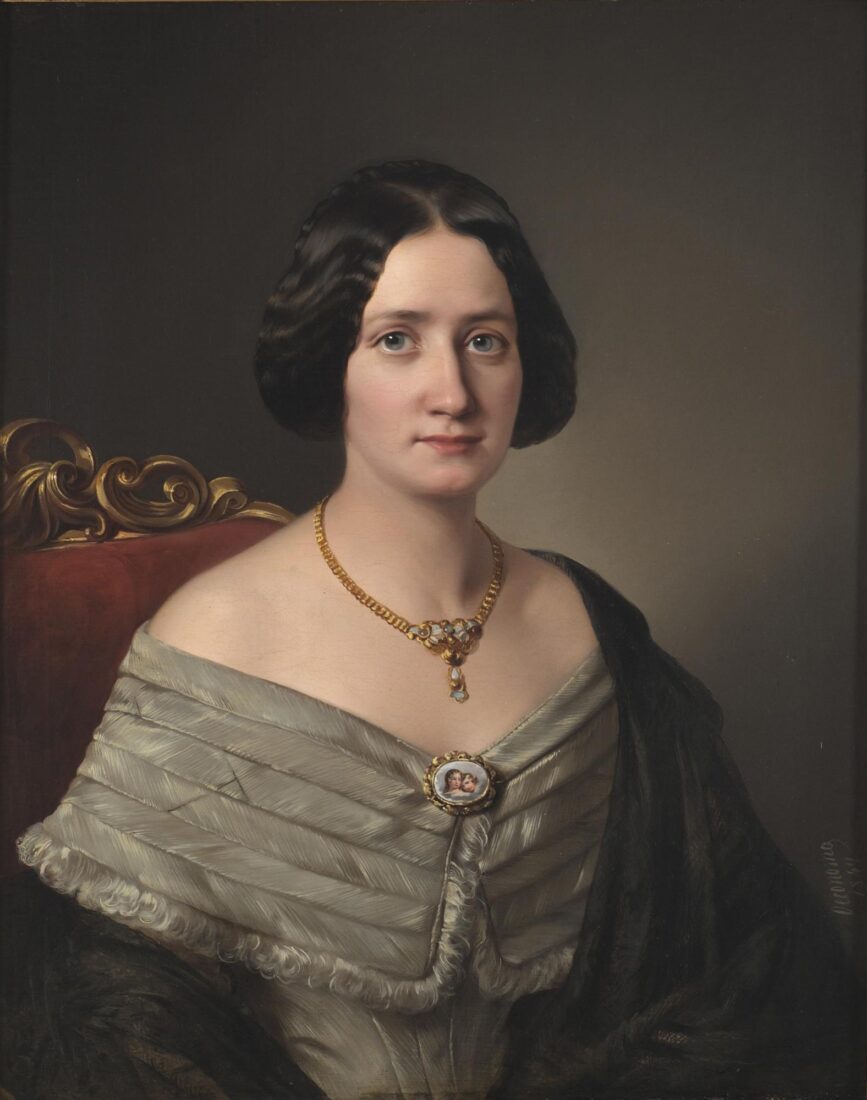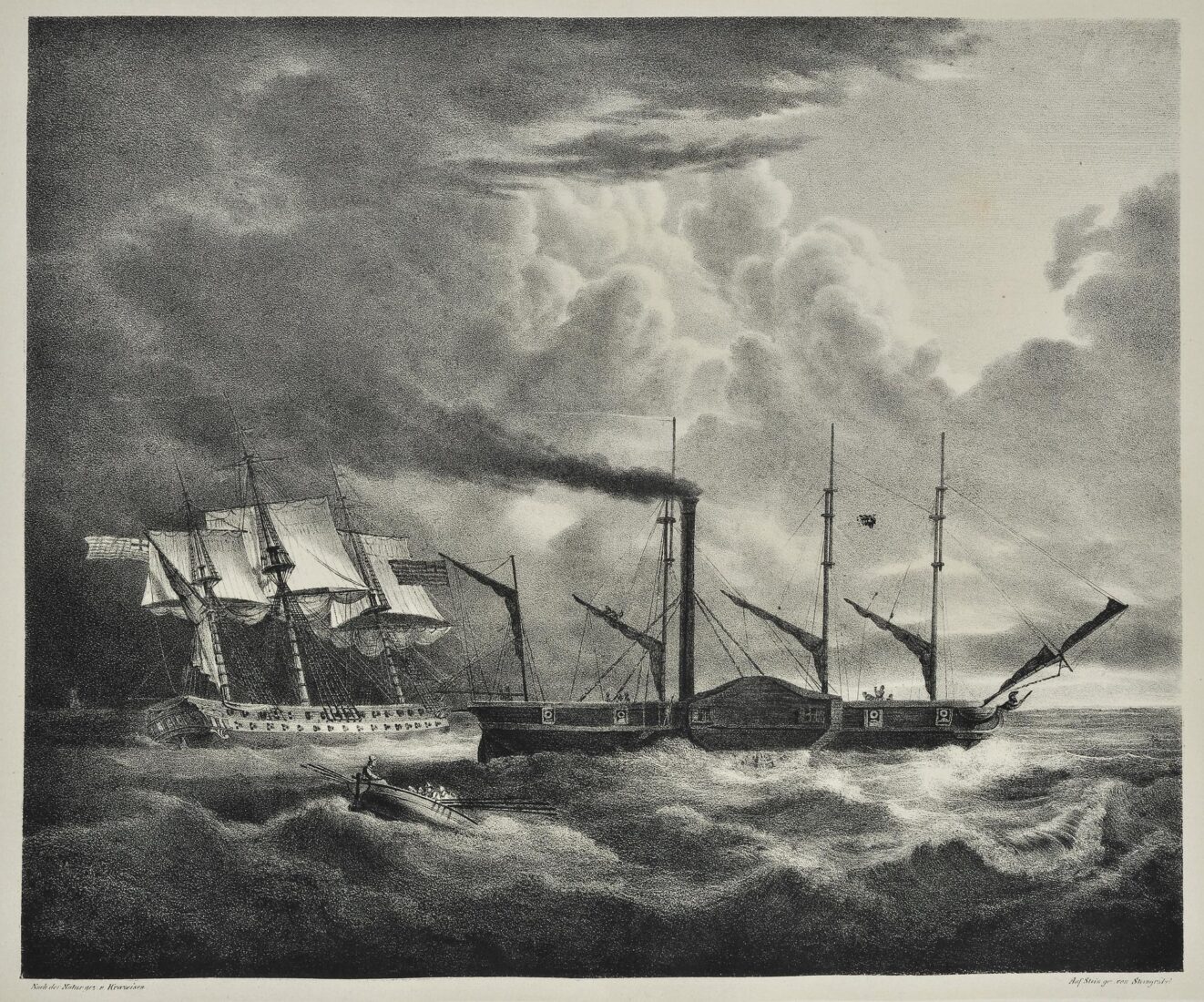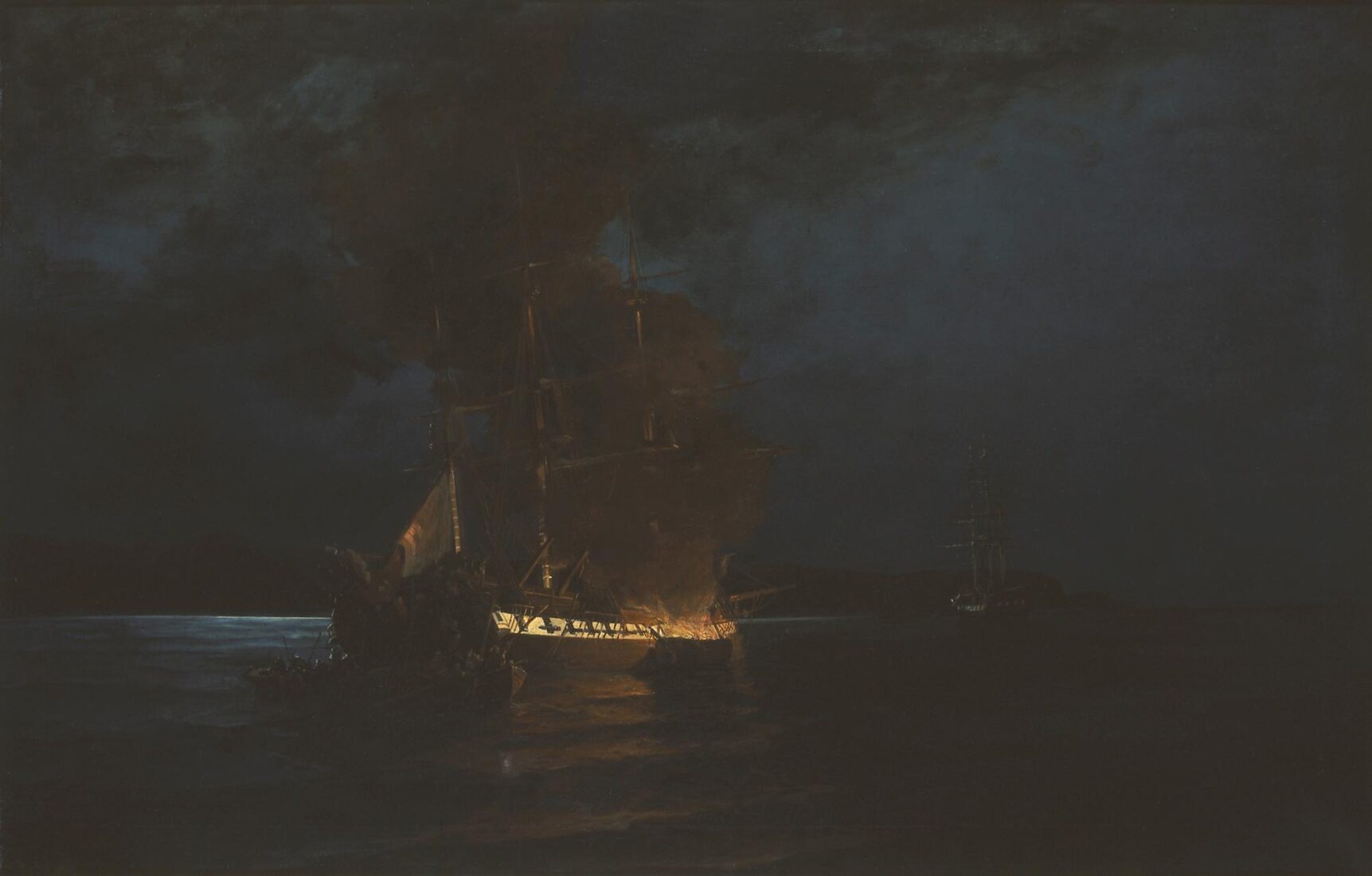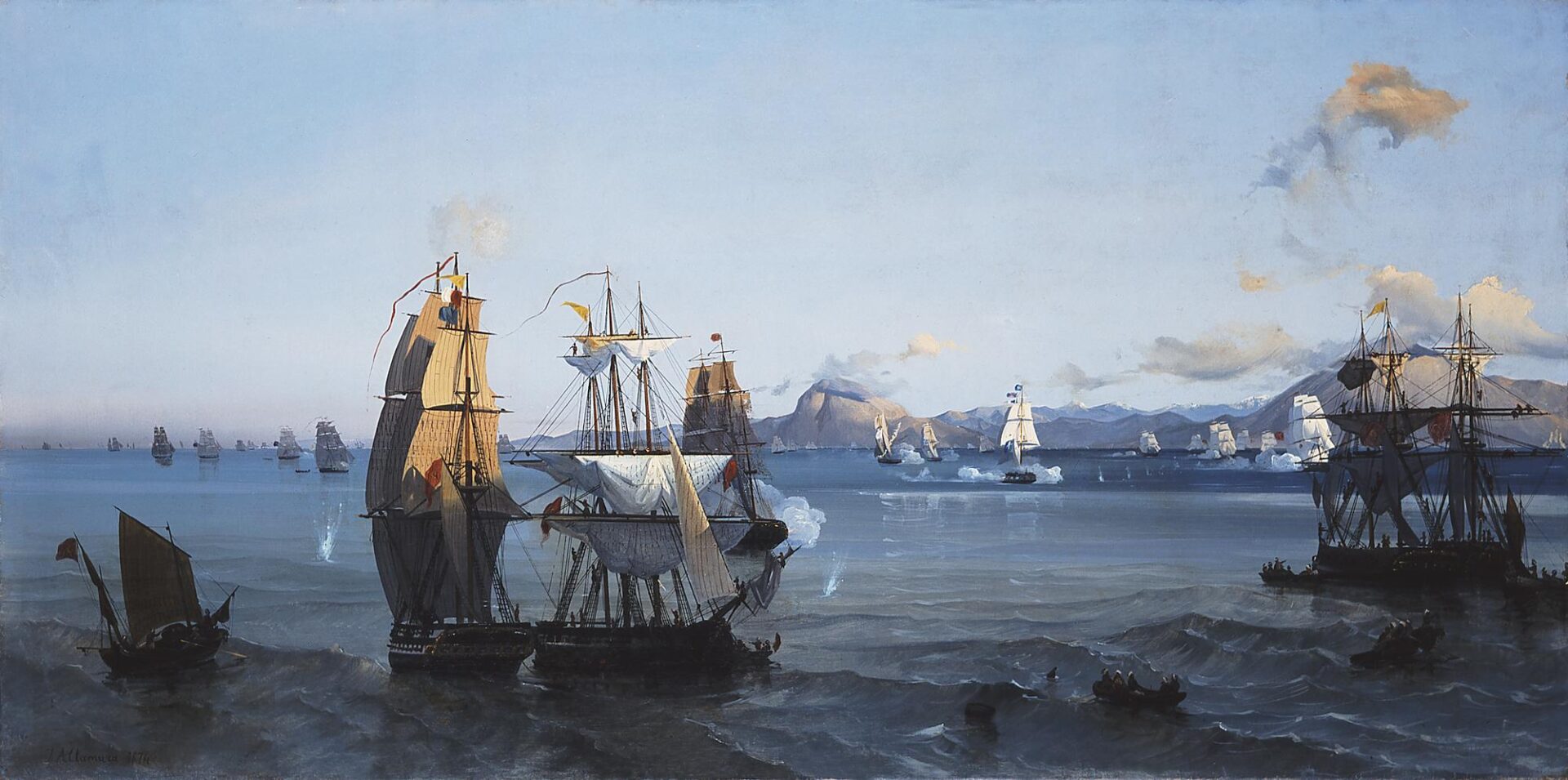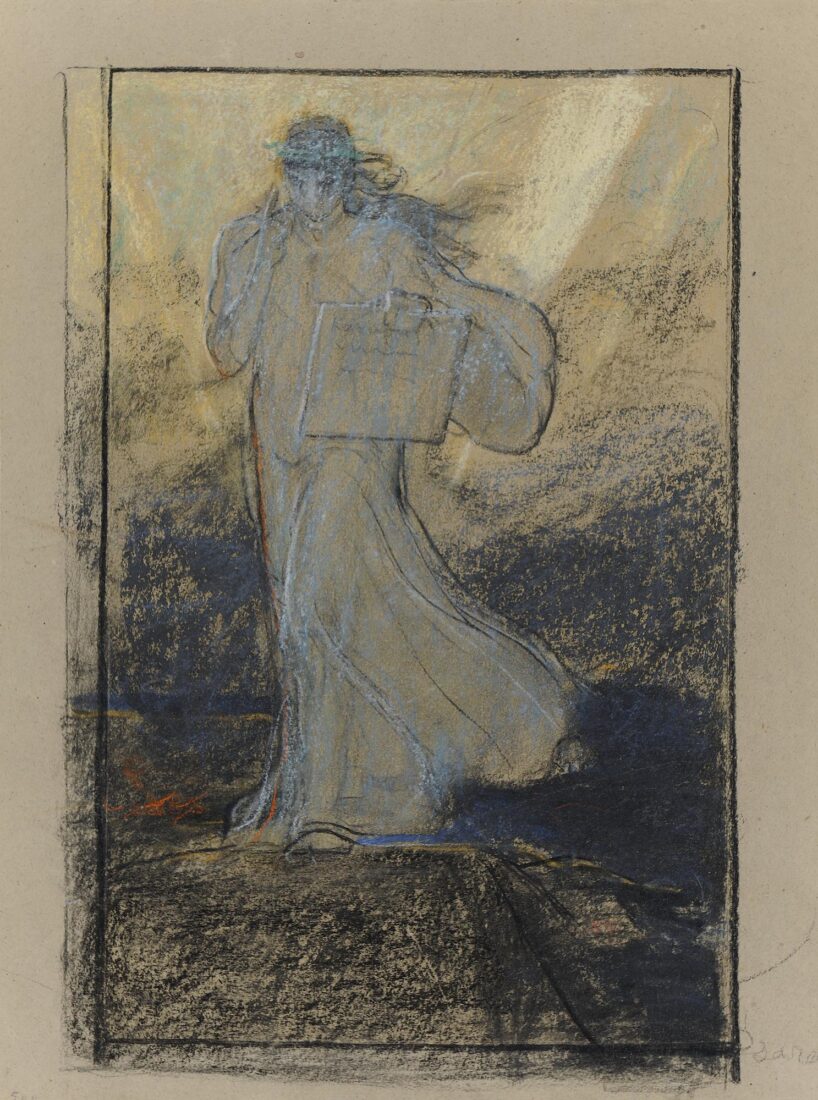

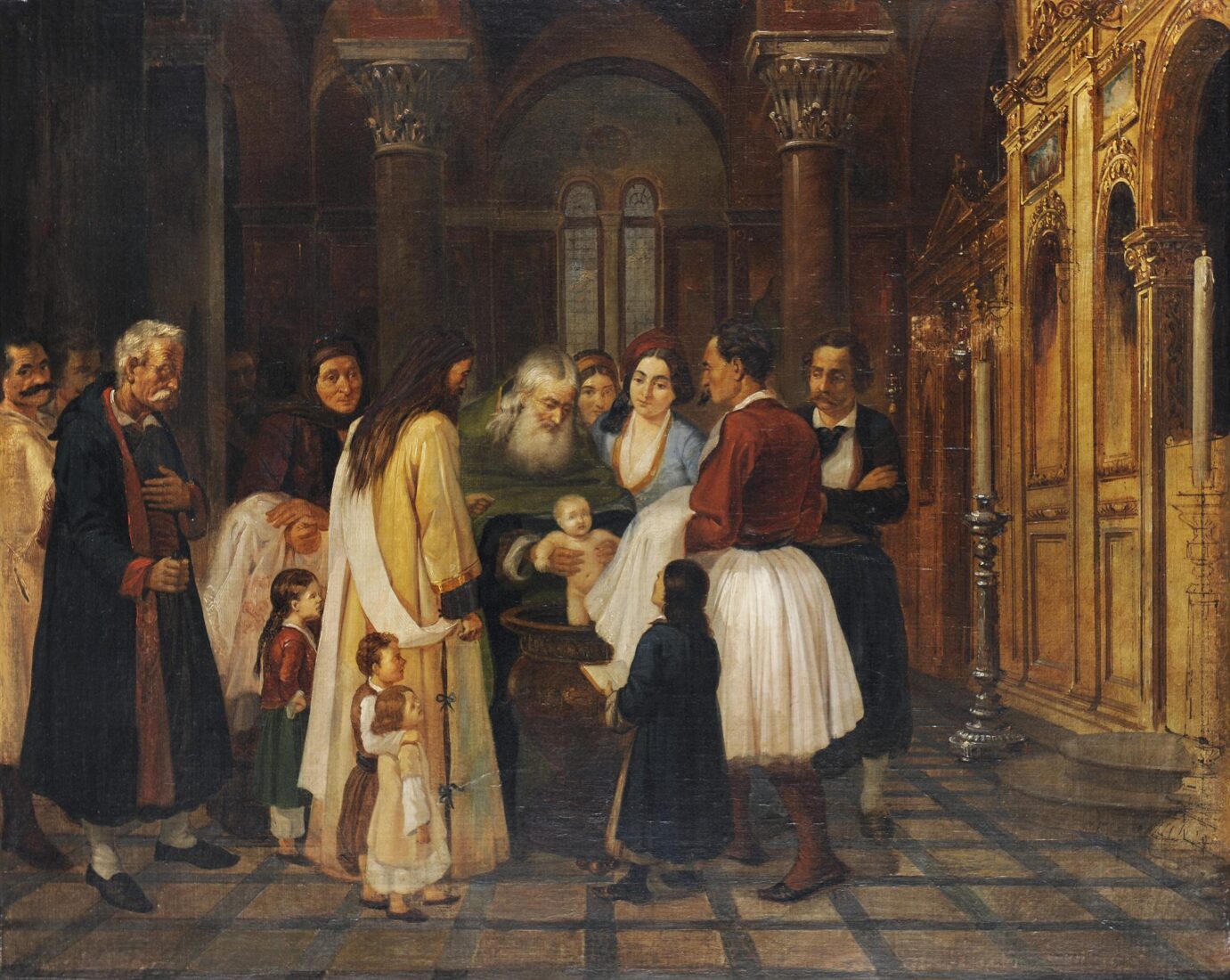
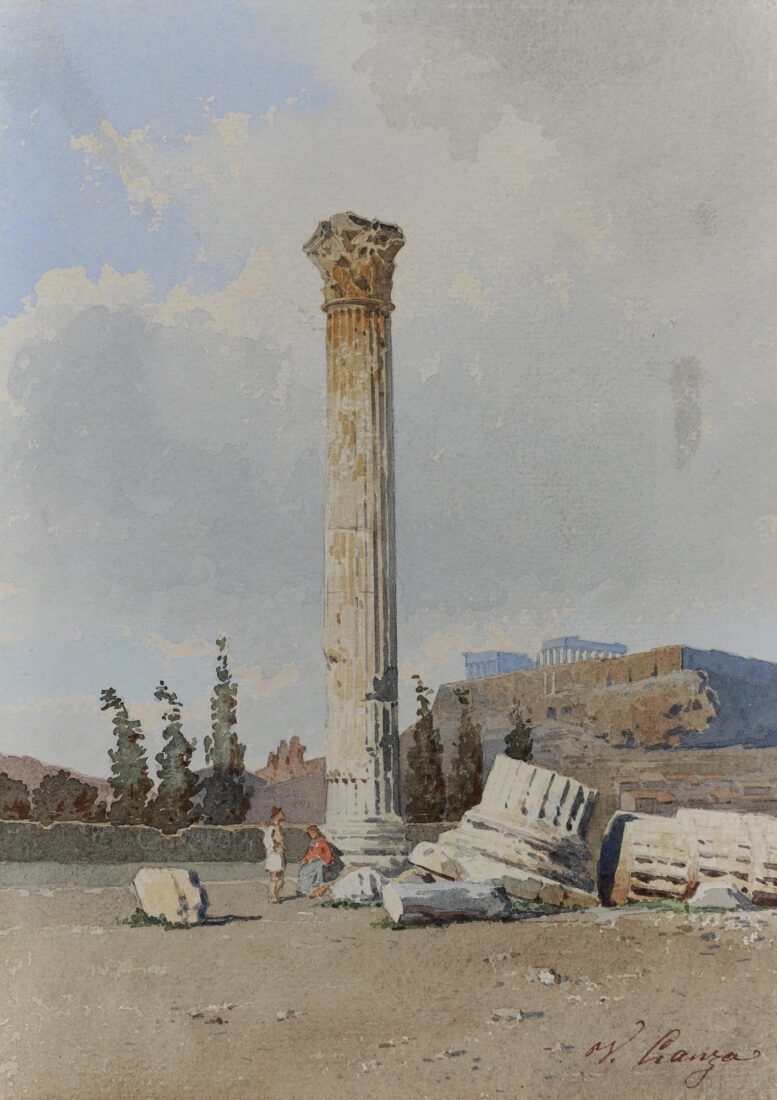
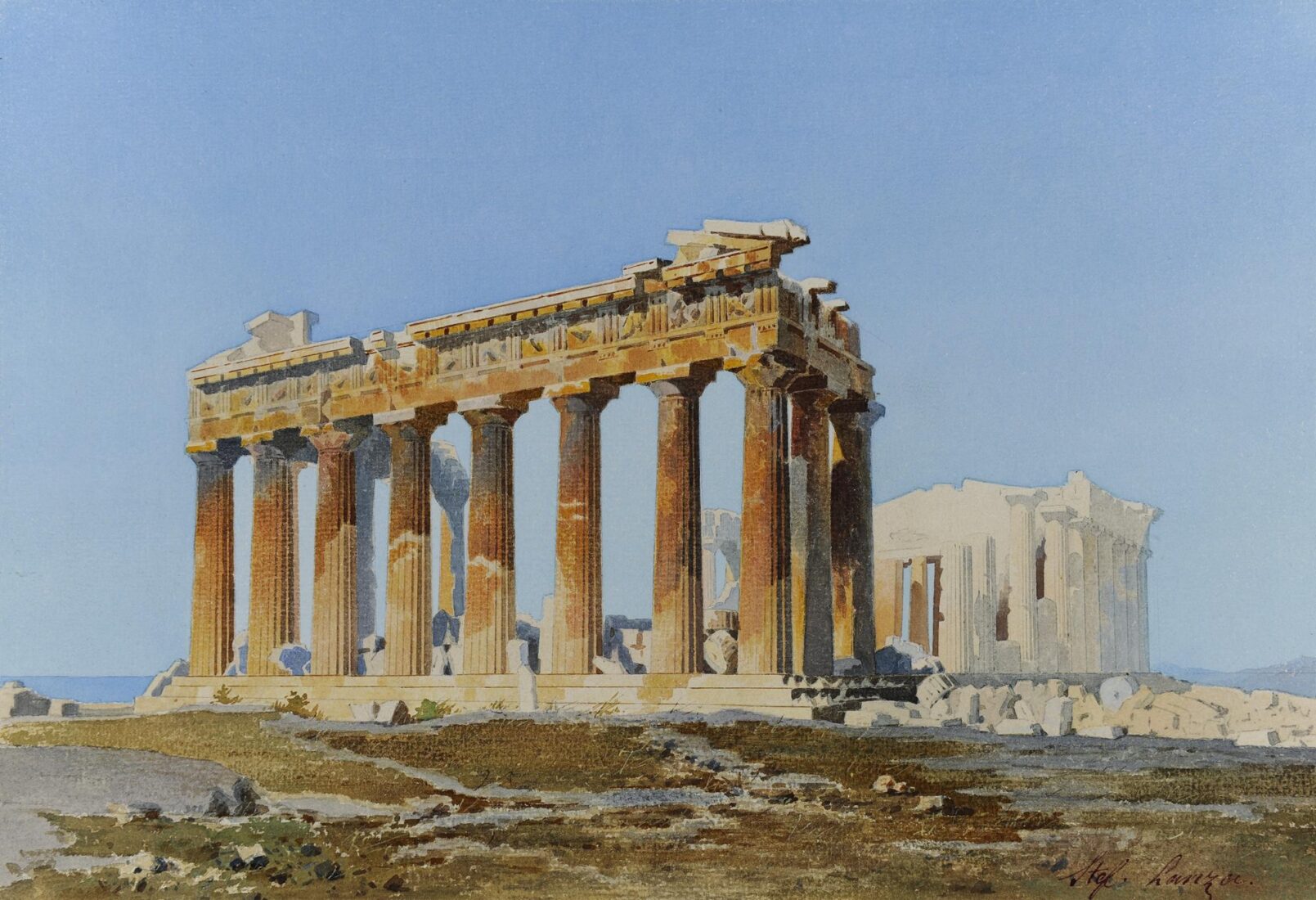
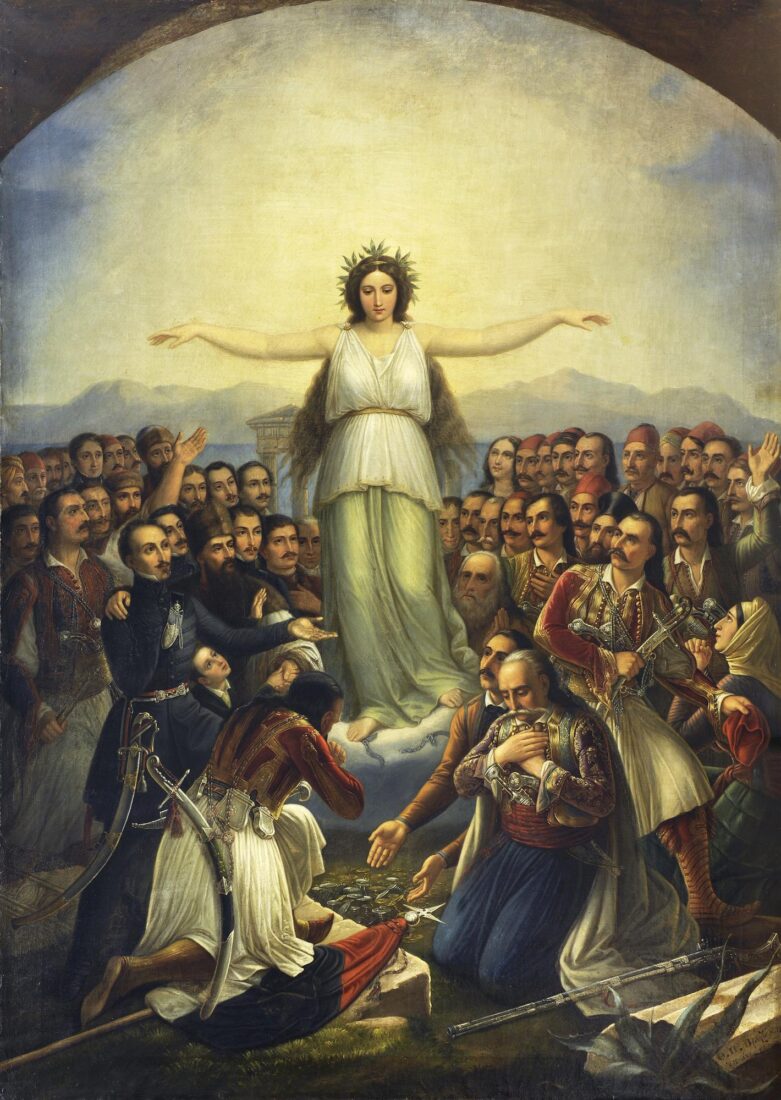
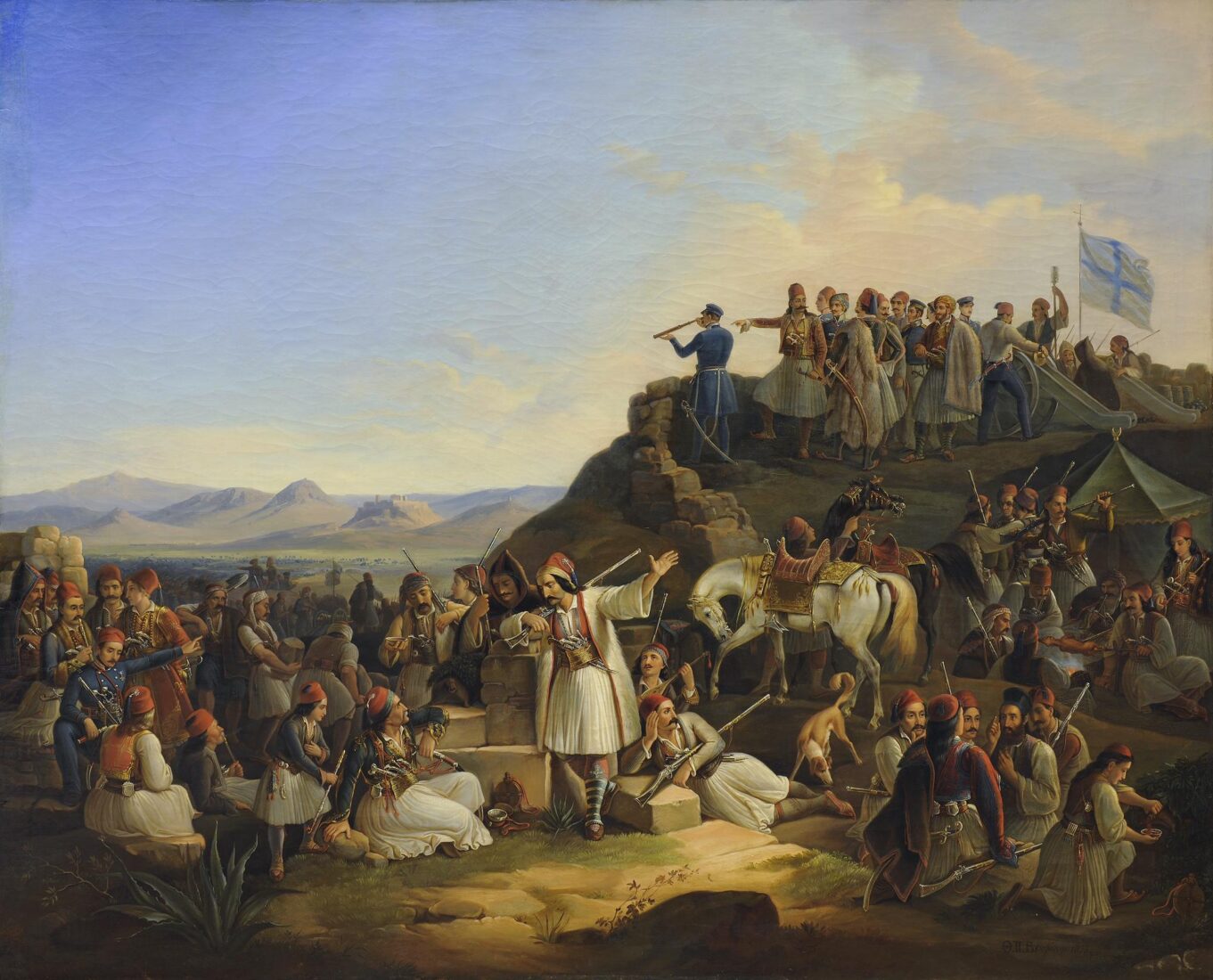
This painting depicts the army camp of General Karaiskakis at Phaliron during Greek preparations to capture the Acropolis, besieged by the Turks, in April 1827. Greeks and philhellenes are arranged along a section in the foreground, while in the mid-ground on the right, the eye is guided towards the hill from which the leading officers of the army survey the battle field. In the background on the left can be seen the Acropolis. Almost in the centre, a Greek is leaning against an ancient marble in an allusion to the heritage of classical Greece. On the right, a priest is blessing the fighters. The officer in the blue uniform on the left is Bavarian philhellene Krazeisen, to whom the Greeks are grateful. He captured for posterity the figures of the 1821 freedom fighters as we know them today. It is from these drawings that Vryzakis sourced the portraits of the fighters on the hill: Karaiskakis, Makrygiannis, Tzavelas, Notaras, the Scot named Gordon, Englishman Hastings and Karl von Heideck, looking towards the Acropolis through a telescope. Heideck, who had first-hand experience of these events, painted the same subject, and Vryzakis quoted his painting much later, in 1855. The Greek flag sways on the top right. The gold-red and brown colours characteristic of Vryzakis’ work are also pre-eminent in this painting. The description blends tension and suspense with release provided by charming genre interludes.
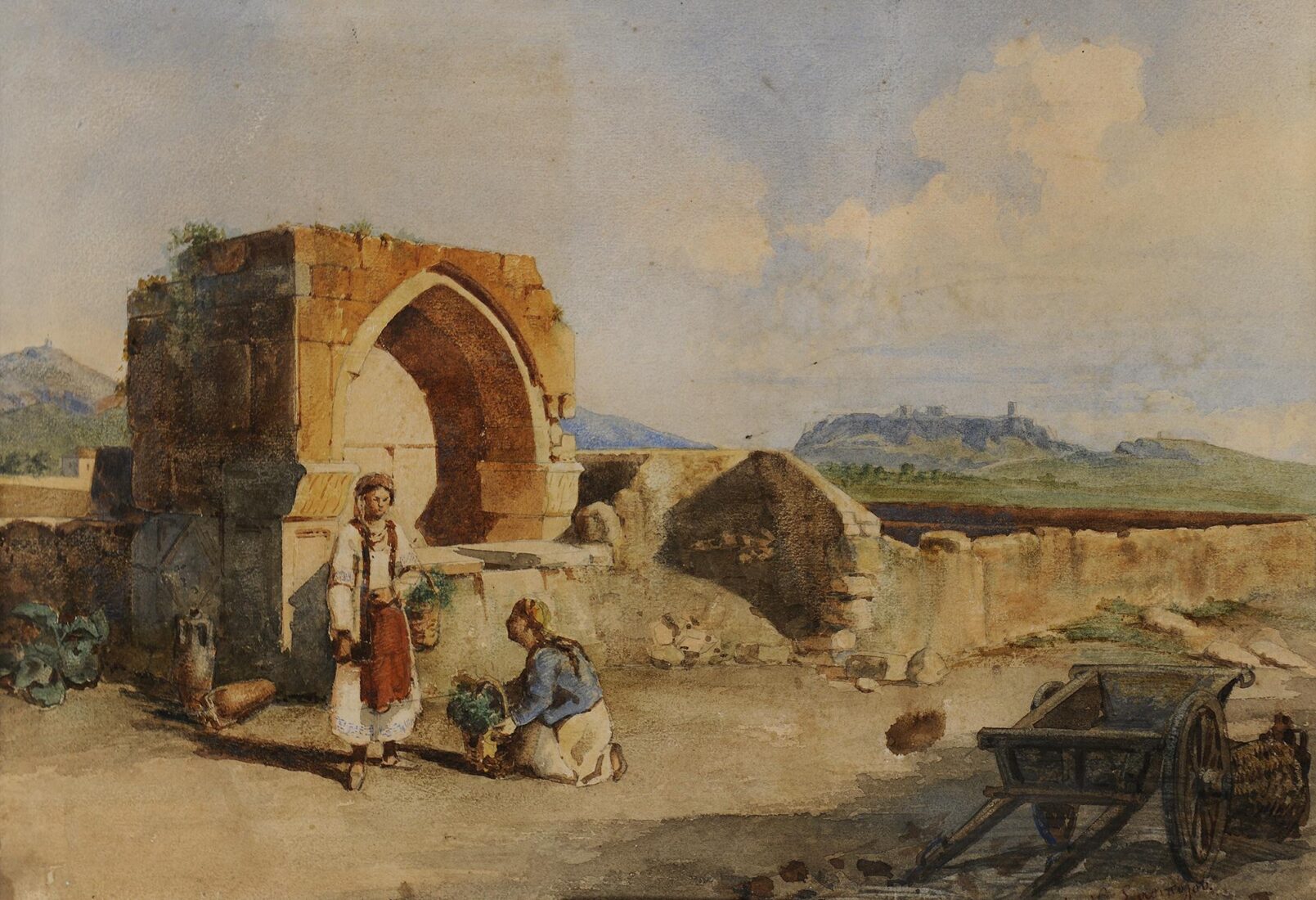
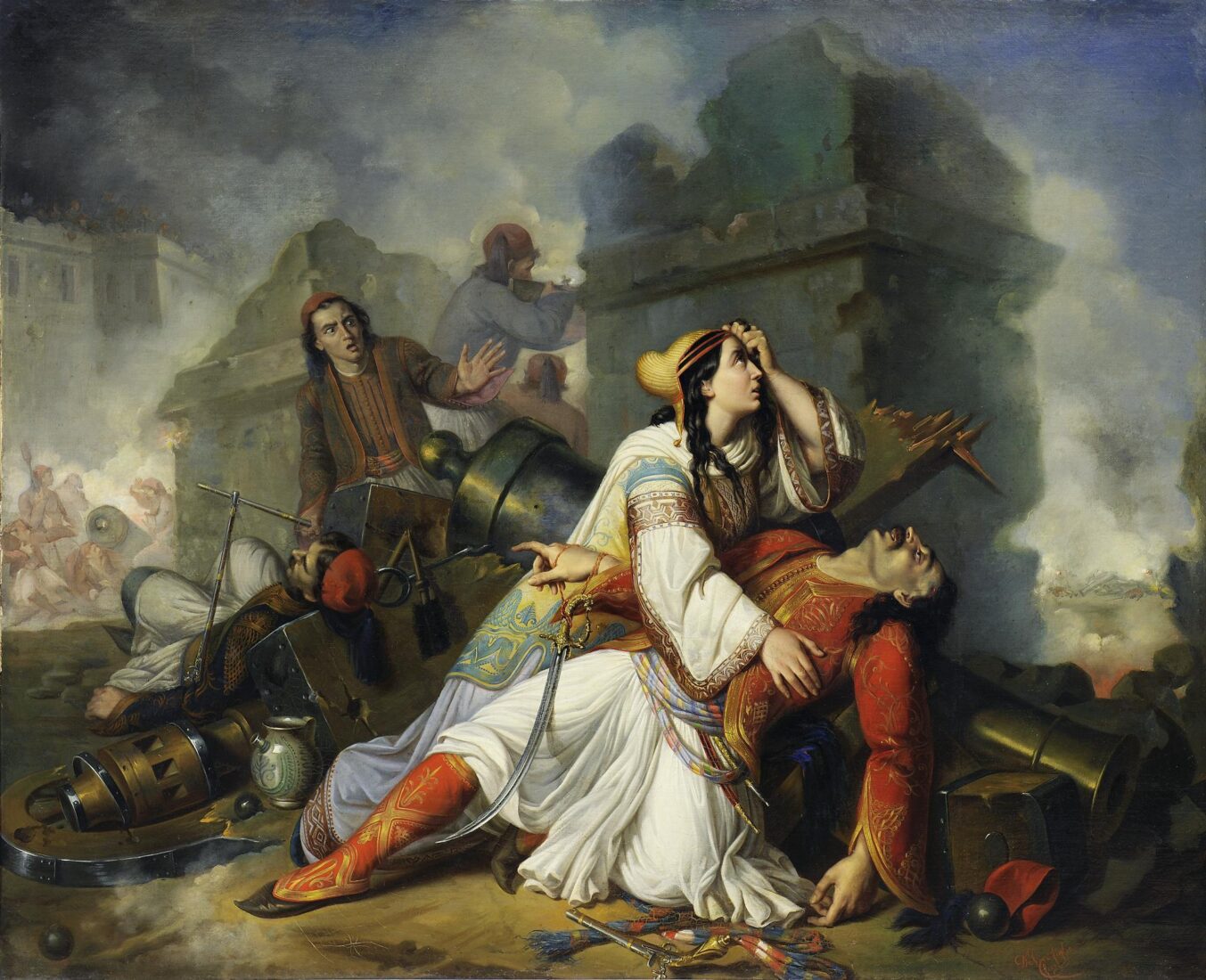
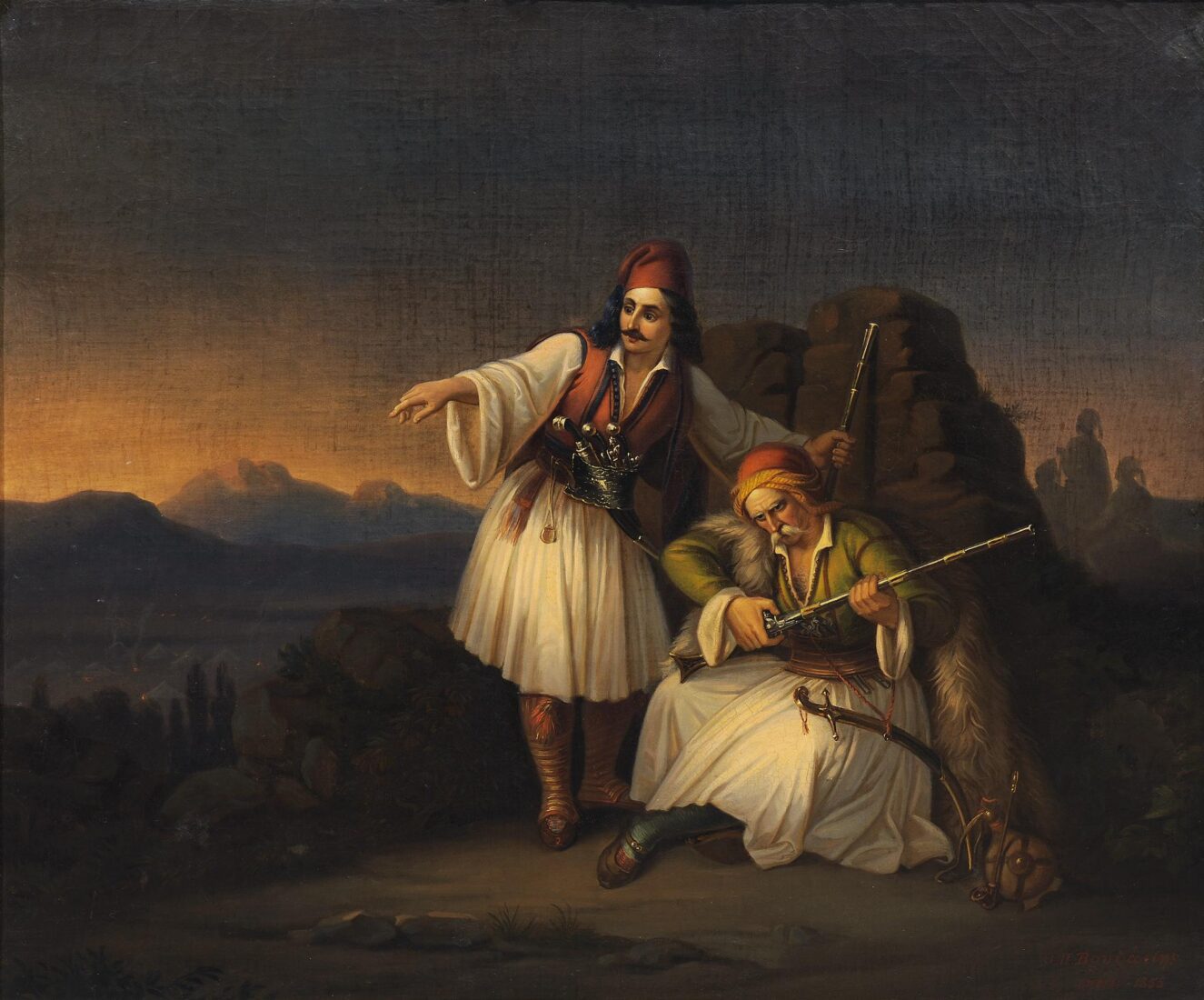
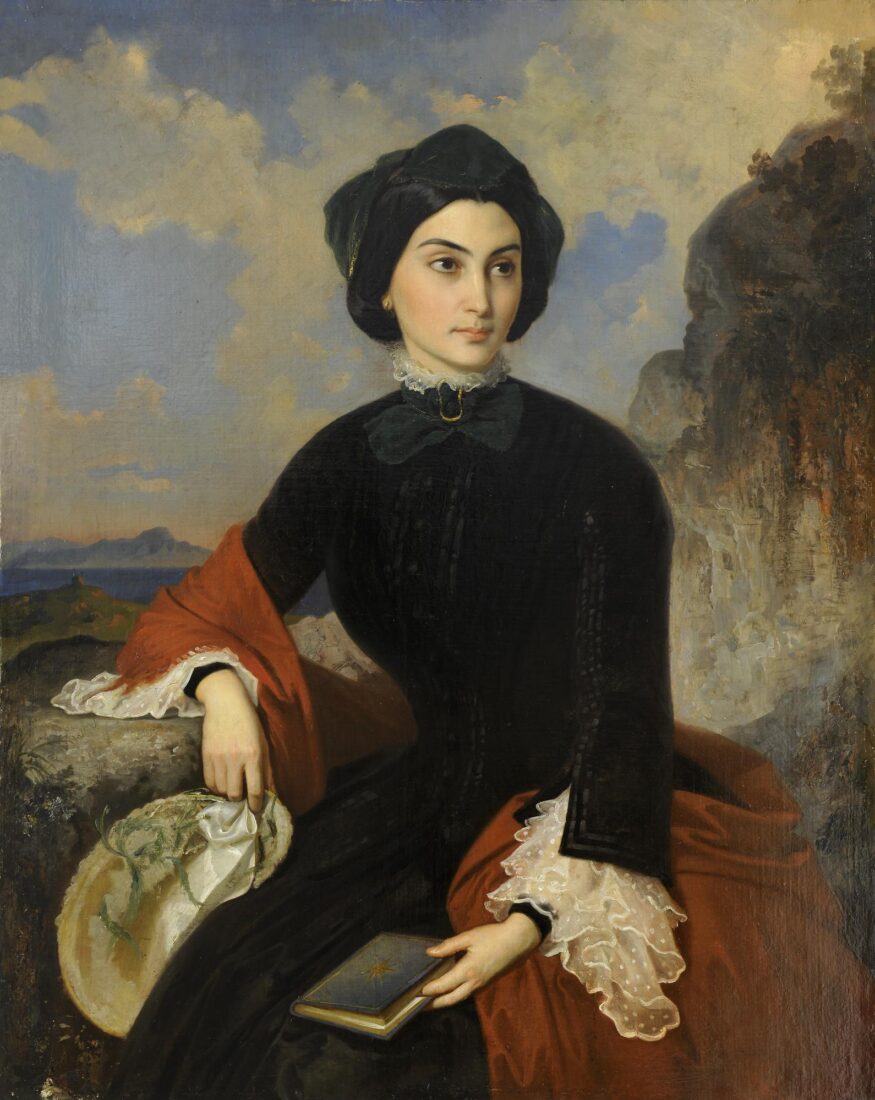
The Bavarian artist Ludwig Thiersch was one of the first professors at the School of Arts. His model here is a woman of great personality, Kleoniki Gennadiou, one of the first Greek women painters and sculptors. She is elegantly dressed, holding a book in her left hand, probably a book of poetry, a detail suggesting that she was an educated, scholarly person.
Now for the first time, the figure is placed outdoors: the rock on the right, the sea, an island in the background, the blue sky with orange clouds, all suggest Greece. With her romantic beauty and her dreamy eyes, Kleoniki Gennadiou is a representative example of how a foreign artist envisioned the ideal Greek beauty.
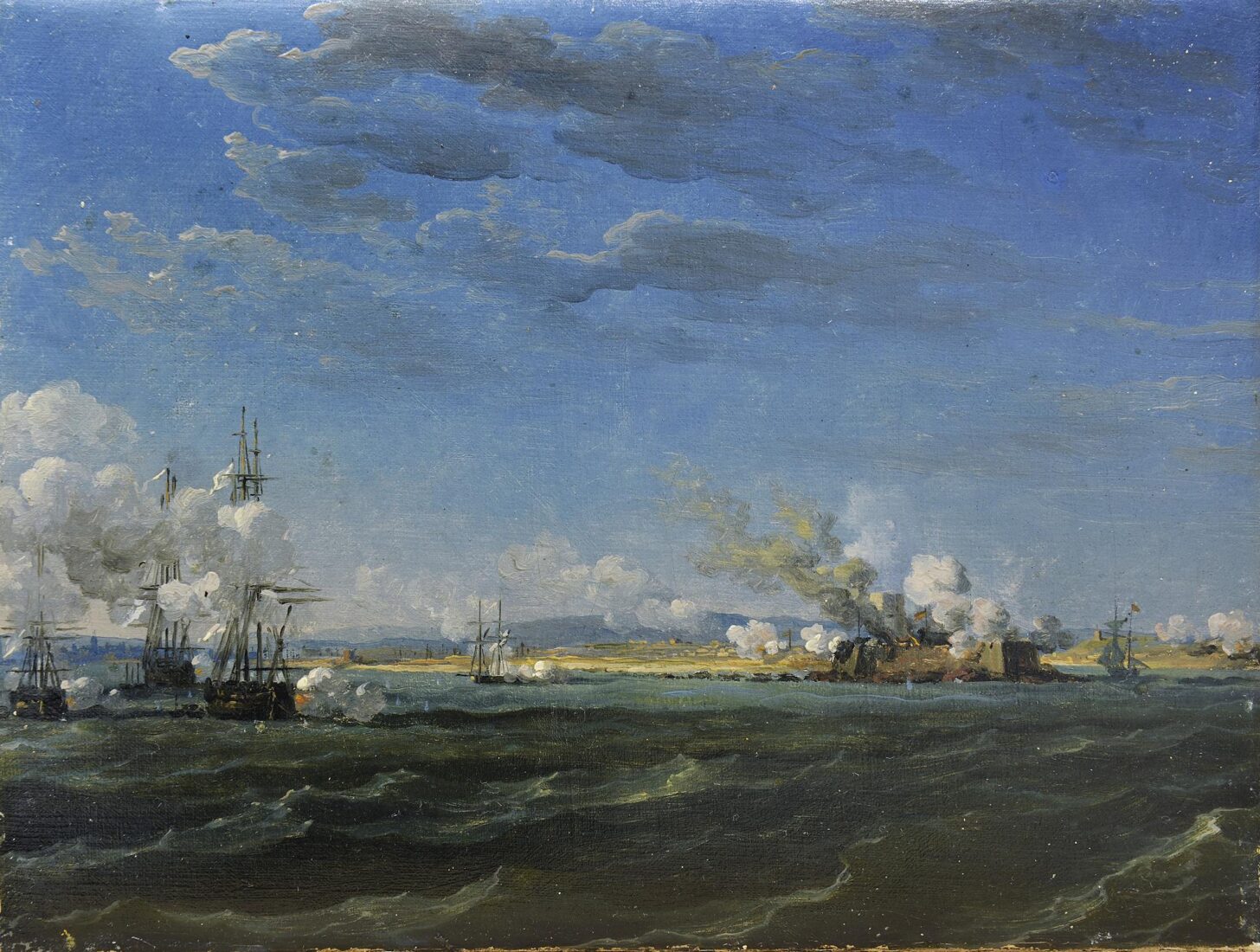
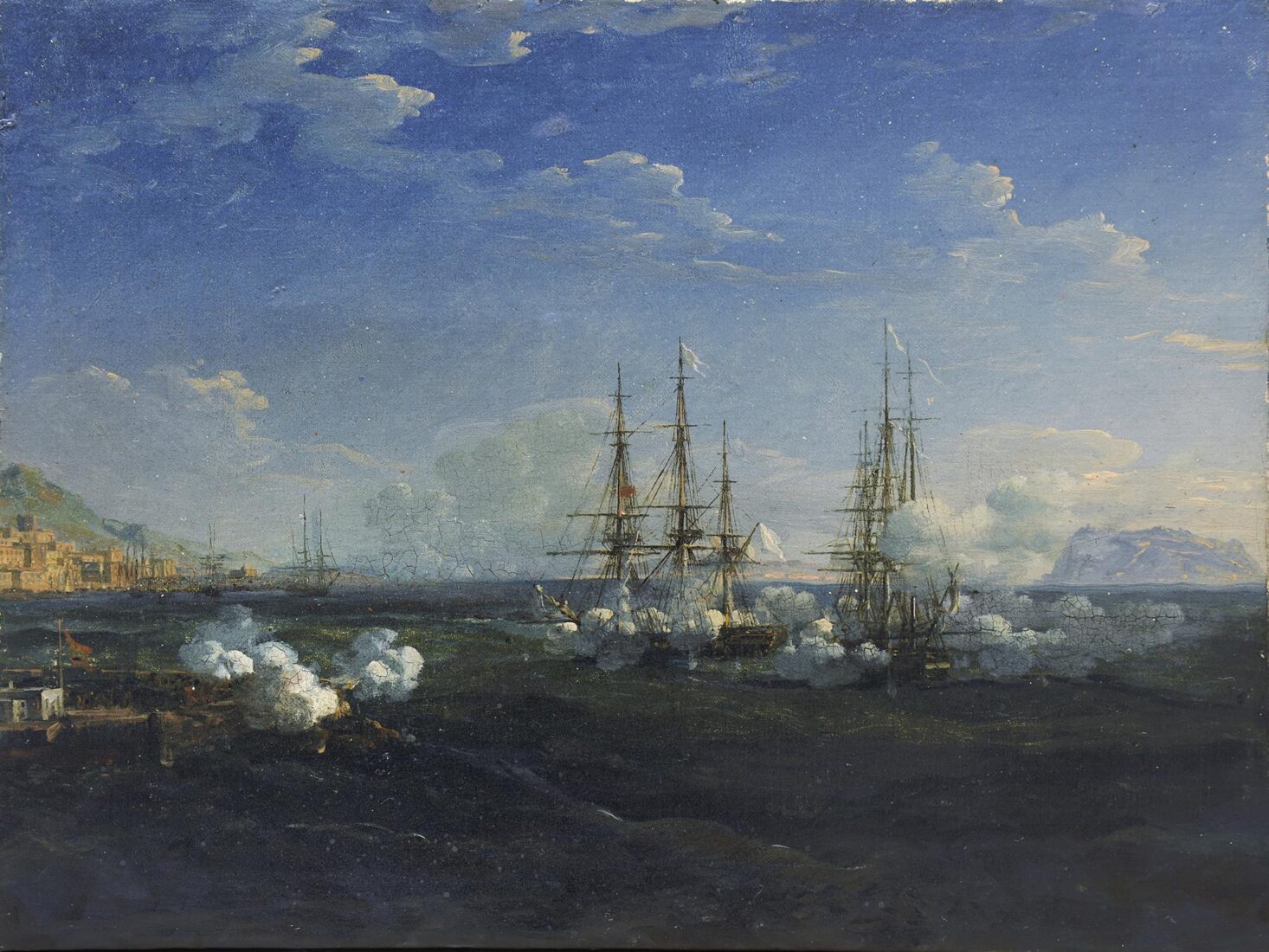
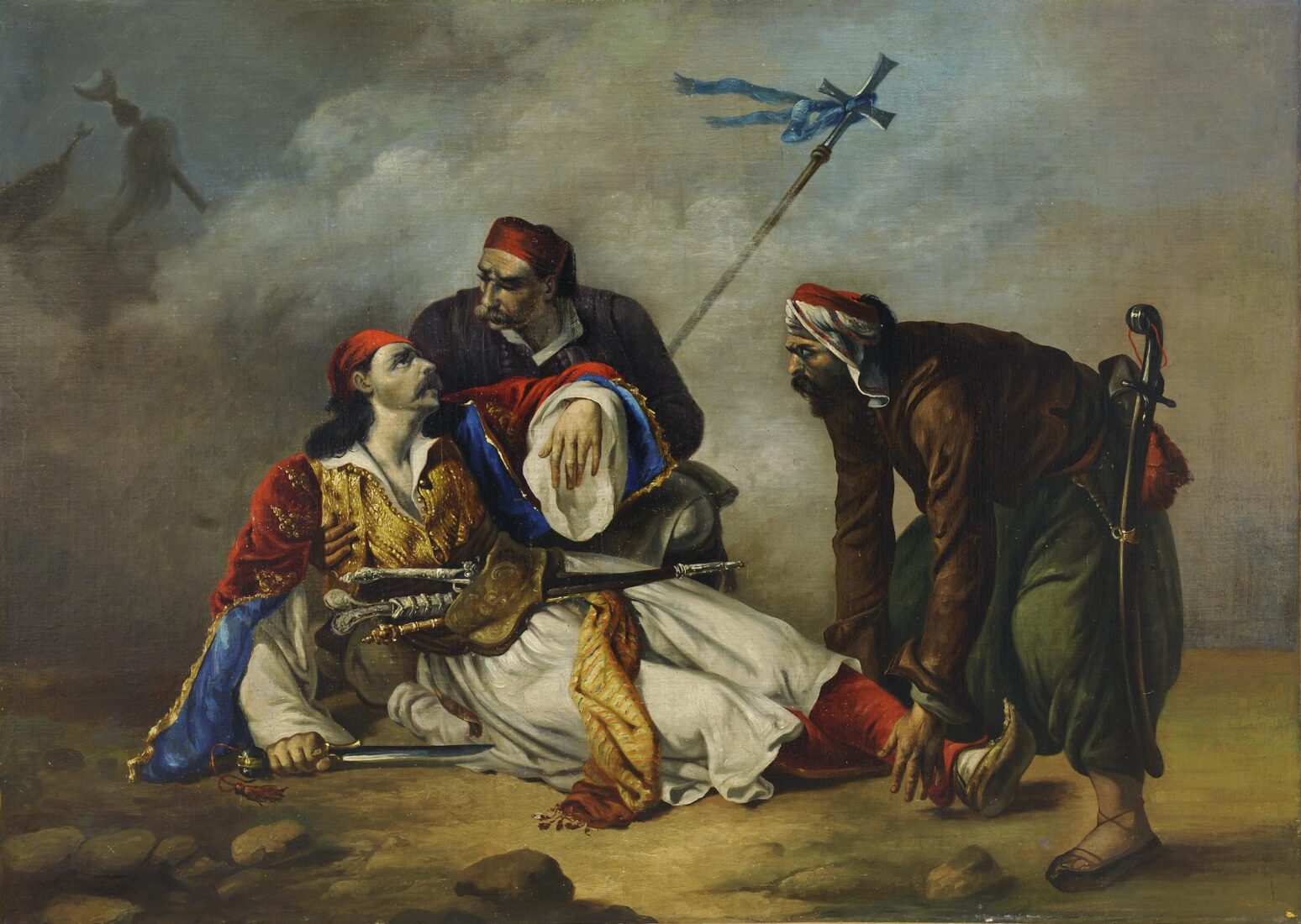
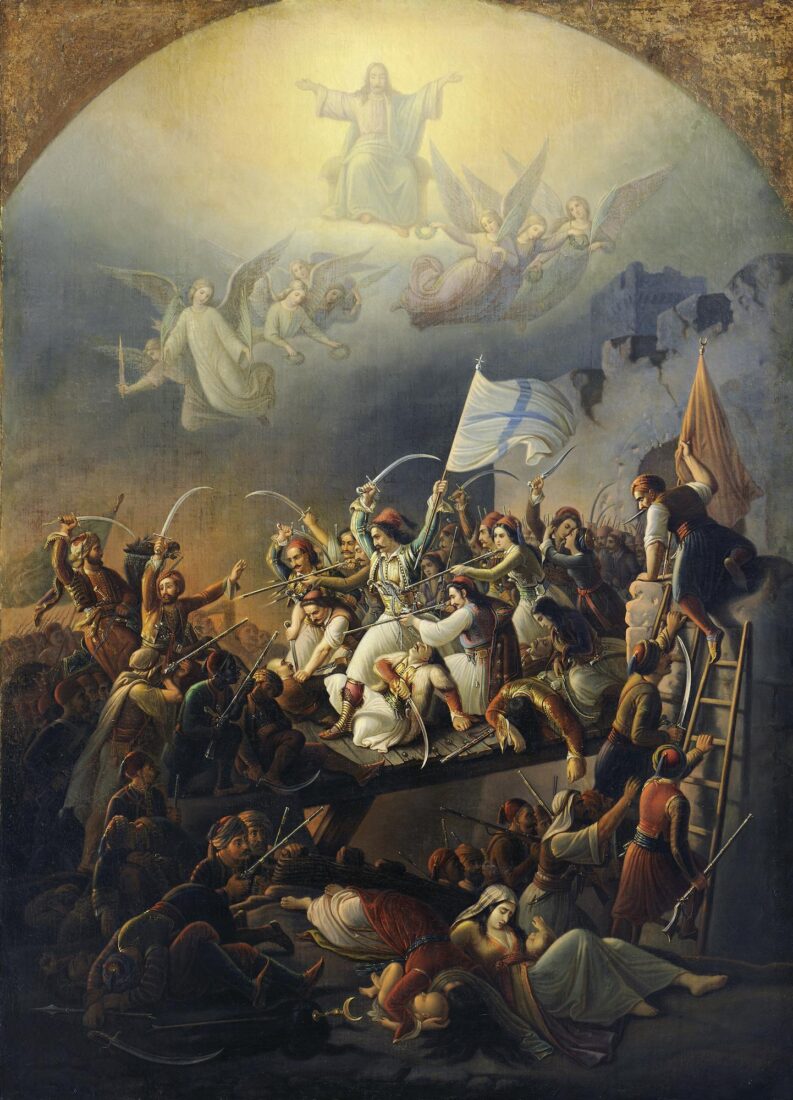
The artist who painted this work, Theodoros Vryzakis, was left an orphan in the War of Independence, when his father was hanged by the Turks. He studied in Munich and became the main exponent of historical painting.
This major painting evokes one of the most tragic and renowned episodes in the Greek struggle for independence – the heroic exodus of the inhabitants of the town of Missolonghi during the night of April 10, 1826. The composition is arranged along a perpendicular axis, without depth, split into two sections: the heavenly and the earthly one. In the heavenly section, on the axis, that is, in the centre of the composition, is seen the enthroned God in a golden cloud, blessing the fighters, while angels with laurel leaves and wreaths are preparing to coronate the heroes. The Greeks believed that their rightful cause enjoyed Christ’s blessing. In the earthly section, on a wood bridge, Greek fighters are seen brandishing their swords, storming out of the wall gate. One of them is waving in his left hand the Greek flag with the cross on the pole. Some have already been wounded. Women and children follow. Mothers and children have fallen in the ditch underneath the bridge. Some are already dead, others lie dying. The fully armed Turks are waiting for the heroic fighters. Some of them are climbing up the walls on a ladder. Uproar, tension, drama prevail. It is as if we could almost hear the noise of weapons and the cries of the wounded. The painter has depicted the scene in great accuracy and meticulousness. This painting is romantic in spirit but academic, calligraphic, careful in implementation. A brown and gold tonal palette of black, white and red prevails.
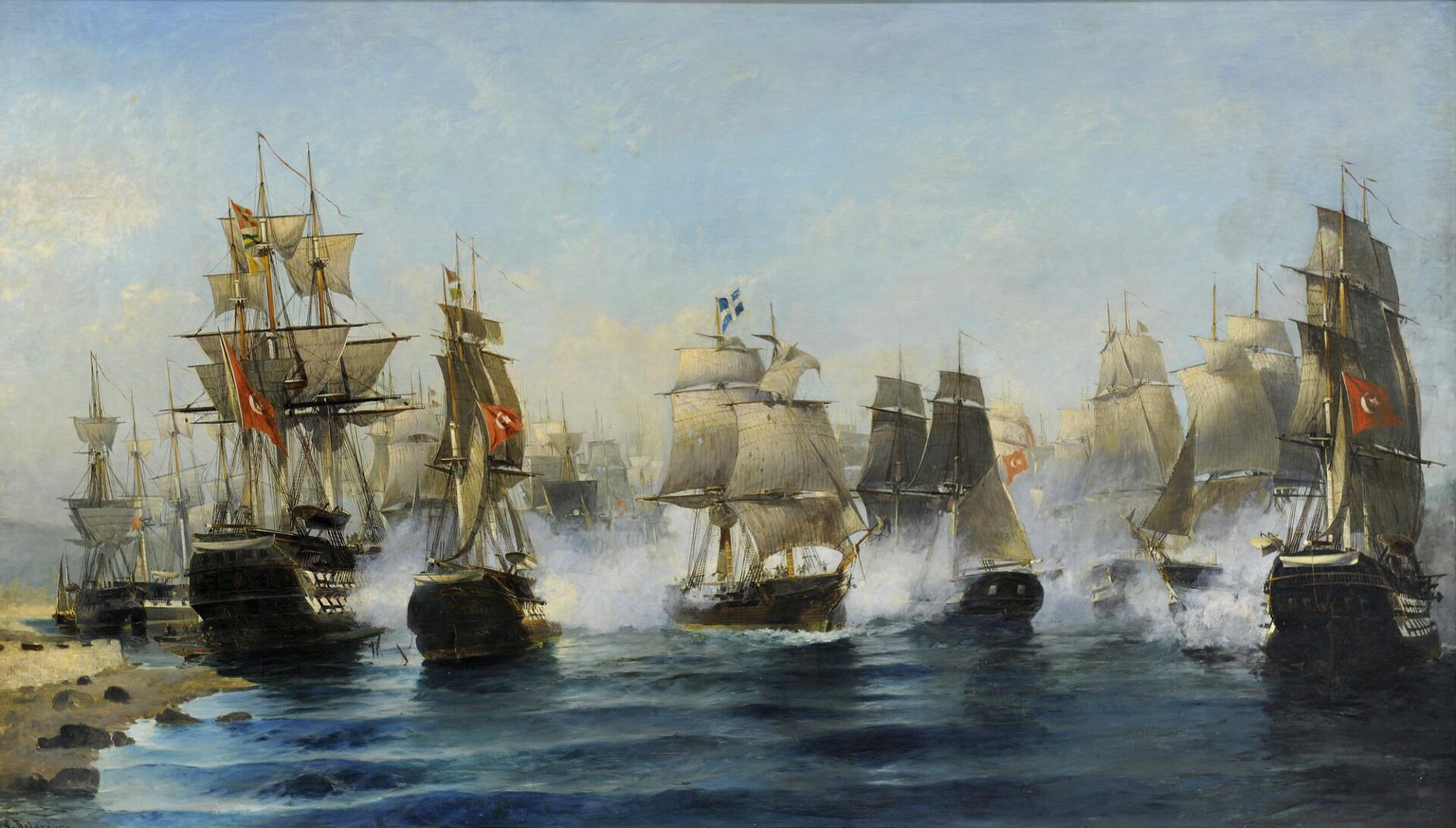
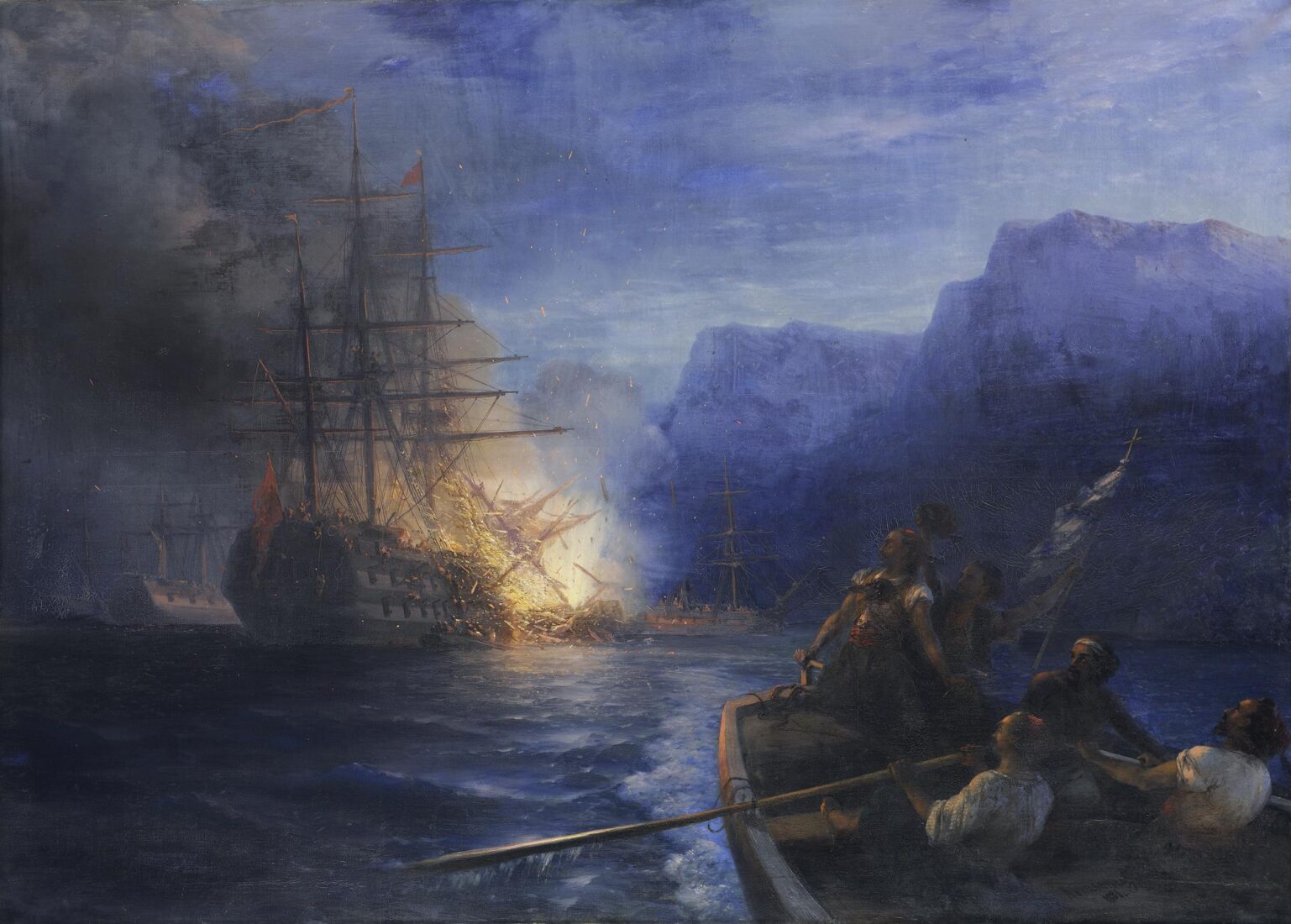
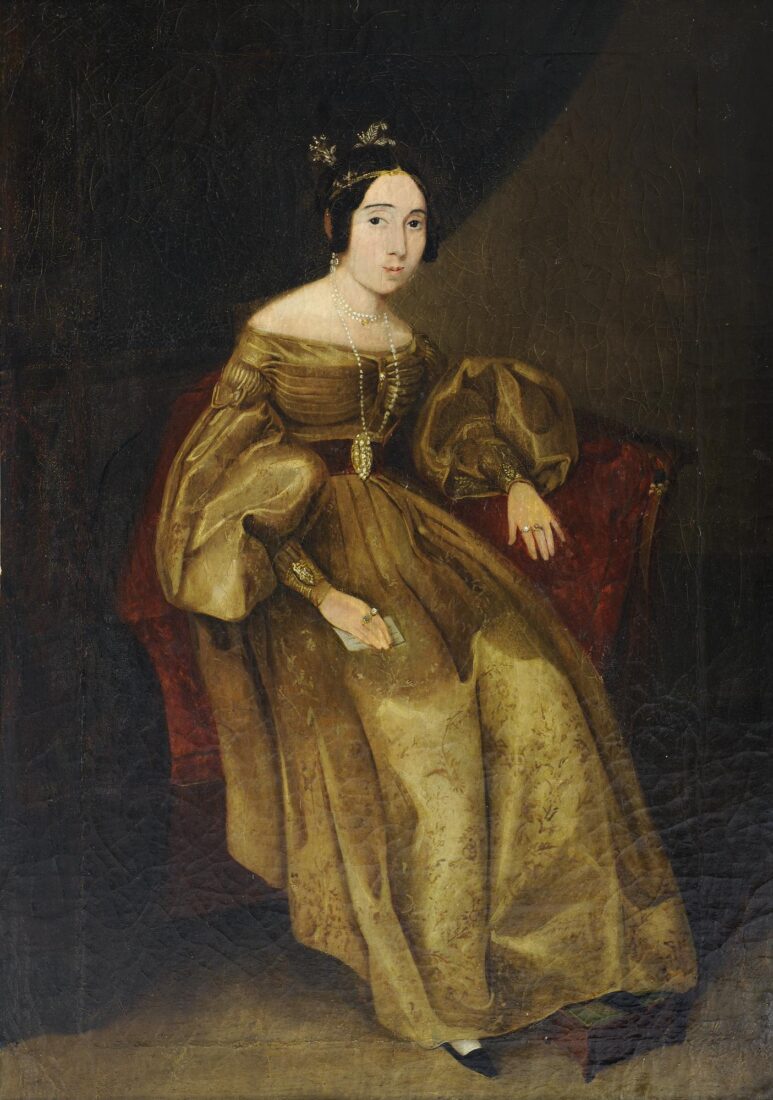
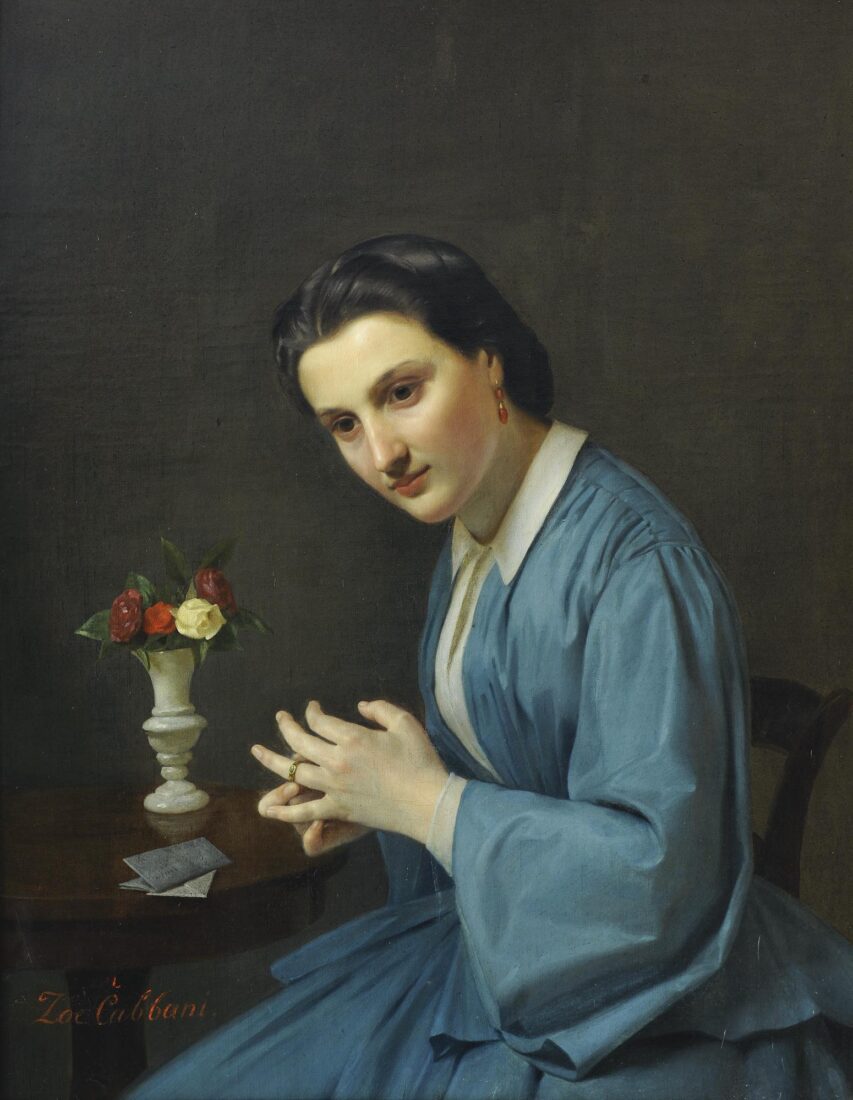
The Cretan artist Nikolaos Kounelakis studied in St Petersburg but lived and worked in Florence, where he was inspired by the great masters of the Renaissance, such as Raffaello, as well as the neoclassicism of his contemporary French artist Ingres, also related to Florence. Both artists, Raffaello and Ingres, sought to capture the ideal figure.
Zoe Kambani was the artist’s fiancee. She is shown putting her engagement ring around her finger, against a solid dark background, her eyes dreamy, as if lost in tender anticipation of love. An opened love letter on the table with the flower vase is the only additional element in the painting. The girl’s comely face, softly modelled, and her plain blue dress underline the classical character of the work.
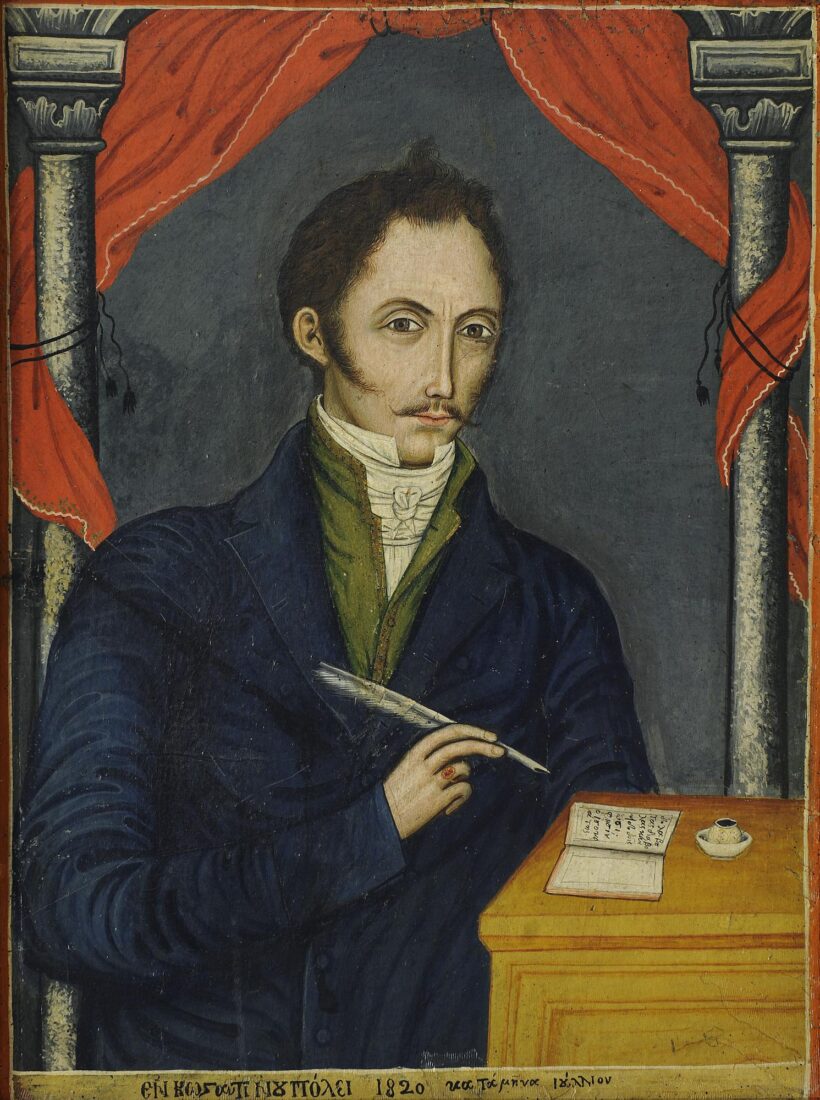
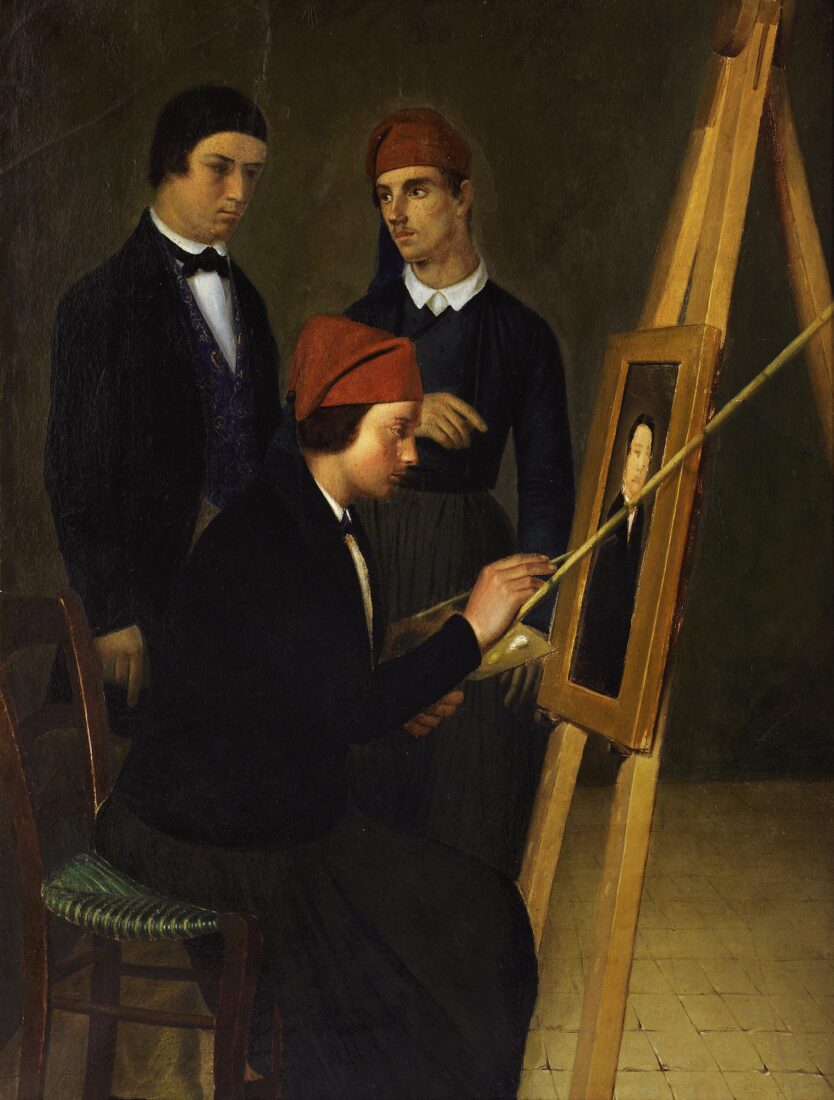
An appealing as well as seminal work, this painting marks the beginning of Greek portraiture. A painting by an unknown to us artist beckons us to visit a young Greek painter’s studio. He is wearing a characteristic costume of the Greek islands, sitting in front of his easel, adding the finishing touches to a male portrait. The sitter, a youth dressed in occidental clothes with a bow-tie is upright, examining his likeness in the painting. Another young man, probably an apprentice painter, also wearing an island costume and cap, is comparing the sitter and his image in order to evaluate the verisimilitude. These may well be young students of the recently established School of Arts, practicing the new genre of portraiture.
